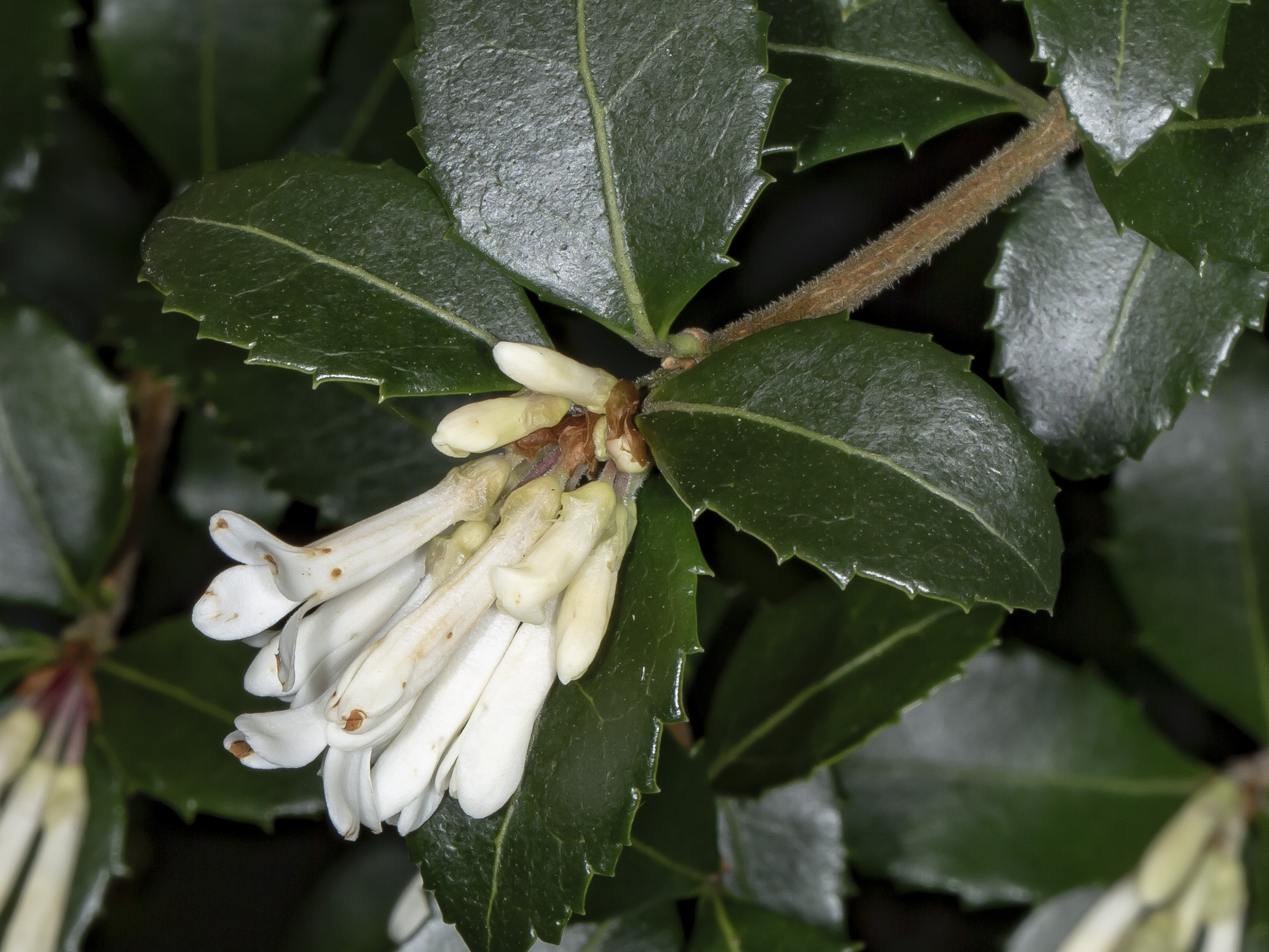Osmanthus delavayi
(Osmanthus delavayi)

Description
Osmanthus delavayi is a species of flowering plant in the olive family Oleaceae. It is an evergreen shrub native to the Guizhou, Sichuan and Yunnan regions of southern China, and widely cultivated as an ornamental in temperate and subtropical zones elsewhere. Osmanthus delavayi was discovered by the Jesuit missionary-botanist Fr Pierre Jean Marie Delavay in the mountains near Lan-kong in Yunnan province, China, in 1890. He sent seed to the French nurseryman Vilmorin. Though Maurice de Vilmorin distributed the seed among various correspondents, only a single seed germinated. All the O. delavayi of European gardens were cloned from this one source, until George Forrest obtained further supplies of seed in China after World War I Over several weeks in late winter to spring, Osmanthus delavayi bears fragrant flowers that are more prominent but less fragrant than Osmanthus fragrans, but substitutes for O. fragrans in less balmy gardens. The shrub currently holds an Award of Garden Merit from the Royal Horticultural Society which it first received in 1923 and has been praised by British garden writers. It is a garden staple in the east coast of Australia as far south as Tasmania.Its USDA Zone range is 7-9 (it can survive -15C), making it hardy in sheltered locations as far north as coastal New York and in the Pacific Northwest. It is a medium sized shrub, eventually reaching up to 4 m (13 ft) tall and broad, though this may take up to 20 years, as the plant is relatively slow-growing. Osmanthus is a genus of about 30 species of flowering plants in the family Oleaceae. Most of the species are native to eastern Asia (China, Japan, Korea, Indochina, the Himalayas, etc.) with a few species from the Caucasus, New Caledonia, and Sumatra. Osmanthus range in size from shrubs to small trees, 2–12 m (7–39 ft) tall. The leaves are opposite, evergreen, and simple, with an entire, serrated or coarsely toothed margin. The flowers are produced in spring, summer or autumn, each flower being about 1 cm long, white, with a four-lobed tubular-based corolla ('petals'). The flowers grow in small panicles, and in several species have a strong fragrance. The fruit is a small (10–15 mm), hard-skinned dark blue to purple drupe containing a single seed.
Taxonomic tree:







